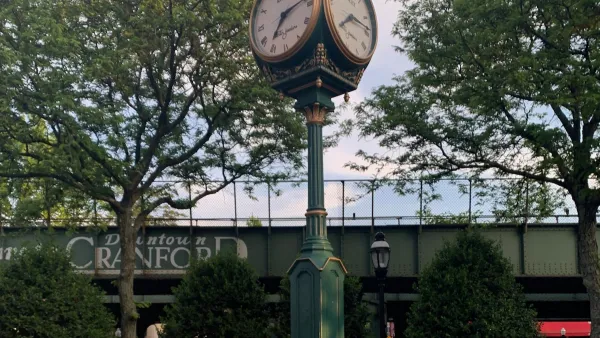I frequently drive to an uncle’s house near the beach via the Garden State Parkway in New Jersey. For years, that drive required a very late Friday evening departure and a similarly late Sunday evening return trip to avoid the wicked stop-and-go that always mires t
I frequently drive to an uncle's house near the beach via the Garden State Parkway in New Jersey. For years, that drive required a very late Friday evening departure and a similarly late Sunday evening return trip to avoid the wicked stop-and-go that always mires the GSP. This year however, something positively different is happening that results in a lot less congestion at previously impossible times. I'm not quite sure what it is, so I'm going to guess for the sake of a blog post: map-based traffic reports.
Here's my theory. My wife and I now regularly check the incredibly accurate Google maps traffic report Friday and Sunday afternoons. Major roadways are depicted with green, yellow, and red overlays representing free flow, slow, and stopped traffic, respectively. This free service is a simple click when looking at a Google map online, and is also available in various forms to other GPS systems and mobile phones. Each week we become more and more enamored with the accuracy of this information.
Friday, it seems, is a lost cause. The peak afternoon traffic combined with New Jersey's notorious "shore traffic" results in a sea of creeping cars that altogether destroys the chances of a smooth late afternoon drive south, even if you invited Moses with you for the drive. But on Sundays – when people have a bit more discretion on when to jump on the highway and head back home – the situation is quite different. By referring to the traffic mapping resources now available, it is entirely possible to confidently navigate through the previously standstill Parkway crunch times encountering only a few pockets of "red".
It's great to find such a rabbit hole, but I submit what is happening is a lot more than just maps of traffic patterns. Humans, as is our nature, tend to find a schedule and stay with it; once one capitulates to the possibility of Sunday afternoon traffic , departure time is more a matter of routine than logic. When people can preview traffic conditions before heading out however, they may be choosing to alter their departures in an attempt to select an easier travel window. I know this is happening, because after being dumbfounded that a lark departure last night at 7:15PM brought us home at 9:45PM (that's just 30 minutes longer than a 10PM-departure free-flow drive), I started thinking about our decision making process. We were planning to leave much later, but after reviewing the traffic information (in which we trust after weeks of testing), we took a chance on a much earlier departure.
I have written before about the convergence of mobility (technologies) and mobility (transportation), using the masochistically horrendous acronym ConMaM; the phenomenon I think I'm experiencing on the GSP may in fact be part of this revolution. What's so interesting about it is that discrete decisions are being made to not add more traffic to an already congested roadway (when it's red) and to put another car on the road when there is additional capacity (when it's green). These are purely selfish decisions, but they benefit society tremendously nonetheless. It's reflexive self-management at its best! For decades we've heard traffic engineers go on and on about autonomous car systems and Intelligent Traffic Systems (ITS), but here it seems that given the right input data, the ‘ol human brain is trumping anything we've been able to plug into a car's operating system.

Analysis: Cybertruck Fatality Rate Far Exceeds That of Ford Pinto
The Tesla Cybertruck was recalled seven times last year.

National Parks Layoffs Will Cause Communities to Lose Billions
Thousands of essential park workers were laid off this week, just before the busy spring break season.

Retro-silient?: America’s First “Eco-burb,” The Woodlands Turns 50
A master-planned community north of Houston offers lessons on green infrastructure and resilient design, but falls short of its founder’s lofty affordability and walkability goals.

Test News Post 1
This is a summary

Analysis: Cybertruck Fatality Rate Far Exceeds That of Ford Pinto
The Tesla Cybertruck was recalled seven times last year.

Test News Headline 46
Test for the image on the front page.
Urban Design for Planners 1: Software Tools
This six-course series explores essential urban design concepts using open source software and equips planners with the tools they need to participate fully in the urban design process.
Planning for Universal Design
Learn the tools for implementing Universal Design in planning regulations.
EMC Planning Group, Inc.
Planetizen
Planetizen
Mpact (formerly Rail~Volution)
Great Falls Development Authority, Inc.
HUDs Office of Policy Development and Research
NYU Wagner Graduate School of Public Service




























